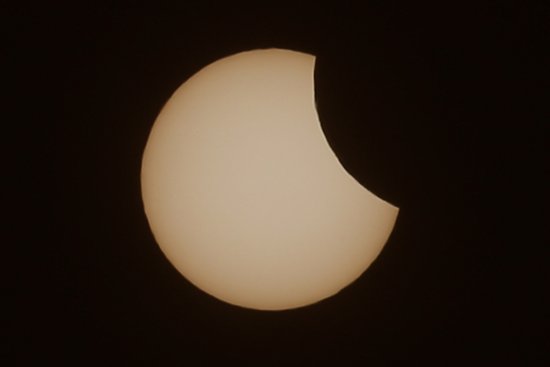
A Friday the 13 partial solar eclipse is set to grace the sky on July 13, marking the first of two partial eclipse during the summer of 2018.
While it won’t be anything like the 2017 total solar eclipse, there is a partial solar eclipse coming up this week.
The July 13 eclipse is particularly rare because it will occur on Friday the 13th, a date that has long been considered a harbinger of bad luck by popular culture. There has not been a solar eclipse on Friday the 13th since December 13, 1974, according to NASA. And the next partial eclipse to occur on Friday the 13th will be on September 13, 2080.
[time-brightcove not-tgx=”true”]Unlike the 2017 total solar eclipse, this week’s partial solar eclipse won’t be visible to Americans — or most of the world for that matter. It will mostly hover over the open ocean between Antartica and the southern tip of Australia, according to the UK’s Nautical Almanac Office.
People in Tasmania, an island off the southern coast of Australia, will most likely get the best view of the July 13 eclipse, which is expected to last one hour and four minutes. The best place to see it may be in Hobart, Tasmania, where about 35% of the sun’s diameter will be covered by the moon at 1:24 p.m. local time, according to the UK’s Nautical Almanac Office.
In Melbourne, Australia, 4% of the sun’s diameter will be covered, which means only a sliver of sun will be darkened by the eclipse. Other places, including Launceston, Tasmania and Geelong, Australia will also have a view of the eclipse on July 13, but they will see less than 25% of the sun blocked out.
The outermost areas where the eclipse will be visible to a population of people is in Adelaide, a costal town in the southern part of Australia, and Invercargill, on the tip of New Zealand. In these areas, only just a small sliver of the sun will be blocked out by the moon, meaning it could look almost like a regular sunny afternoon.
People who are planning to view the partial eclipse should make sure to wear proper glasses to protect their eyes from the sun (eyewear is not required to look at lunar eclipses). And for those taking pictures of the July 13 eclipse with smartphones, there are different tips and tricks to make sure you do so safely.
Even though the Southern Ocean will get the best view of the July 13 eclipse, there will be another chance to see a partial solar eclipse this summer on the opposite end of the world. Northern parts of China, Russia, Eastern Europe the U.K, Sweden, Norway and Finland will be able to see the moon partially block the sun on August 11.